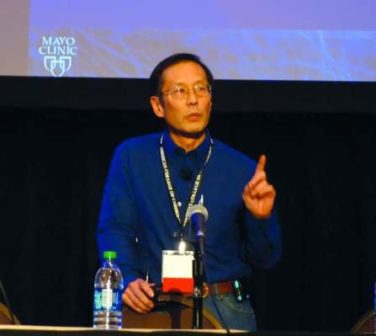EXPERT ANALYSIS FROM THE SUMMIT IN AESTHETIC MEDICINE
Physicians seeking optimal body contouring results for their aesthetic medicine patients are increasingly turning to a variety of energy-based options. Newer technologies for body shaping deliver energy to heat or cool tissue, and each has its own side effect and tolerability profile. Finding the right technology fit for a practice and for a particular patient requires that clinicians understand how these technologies work and who is most likely to benefit.
Dr. Christopher Zachary, professor and chair of dermatology at the University of California, Irvine, reviewed current options for energy-based body sculpting at this year’s Summit in Aesthetic Medicine held in Dana Point, Calif. Current energy-based technologies, he said, either heat or cool tissue to achieve a deliberate panniculitis, followed by gradual apoptosis of fat cells. As adipocytes undergo apoptosis, intracellular contents are metabolized, so intact adipose tissue is not excreted as it is in liposuction, for example.
Dr. Zachary explained that fat destruction caused by cold was first noticed by physicians treating young children with cheek dimples after prolonged exposure to icy treats, a phenomenon they termed “Popsicle panniculitis.” However, heating fat tissue can have the same effect. Whether the technology uses heating or cooling to achieve body contouring, he said, is not as important as the volume and duration of treatment.
Ideally, energy-based contouring technologies should be able to achieve bulk treatment of a relatively large area for a significant amount of time, from 10 to 60 minutes. These criteria allow for the larger-scale controlled loss of cell viability critical for successful contouring, he said.
Zeltiq’s CoolSculpting has been a leader in body contouring using cold technologies, he continued. By achieving bulk cooling of adipose tissue, CoolSculpting can achieve both sculpting and debulking of abdominal, thigh, and flank problem areas. The procedure is generally well tolerated, and achieves gradual recontouring over the weeks following treatment.
Radiofrequency body contouring, said Dr. Zachary, has been led by Cutera . “Cutera has really done the best studies in this area,” he said. The technology uses large electrodes that heat tissue to 45-47° C for 3-6 minutes, “achieving some nice results.” This level of heating achieves significant apoptosis of adipose tissue but is well tolerated.
Near-infrared technology has been pioneered by Cynosure , which can be used to treat bulk areas of tissue. Again, said Dr. Zachary, “The company has done the right studies, using ultrasound and histology to measure results. They’re using the right parameters.”
Another technique is microfocused ultrasound, as pioneered by companies such as Liposonix . This technology creates a well-defined, focused injury and creates a painful acute necrosis. “This doesn’t fit my criteria for effective bulk heating or cooling,” he noted. Additionally, a significant number of patients will have local tenderness, ecchymosis, and edema that can persist for more than a month. Although there may be targeted applications for the technology, it is not likely to be as effective or as well tolerated as some other options, he said.
New areas of inquiry include adding massage to treatment, encouraging speedier and more uniform results. New flat applicators show promise for more effective treatment. Physicians are seeing more patients who have concerns about male breast tissue, submental fat, and acne, for whom these technologies hold promise.
“If we had been having this discussion 5 years ago,” he said, “I would have been rather jaundiced about the outlook in this field. These days, the future is quite bright.”
Dr. Zachary reports that he has financial disclosures related to Solta Medical, Zeltiq, Zimmer, Cutera, and Alma.
On Twitter @karioakes



